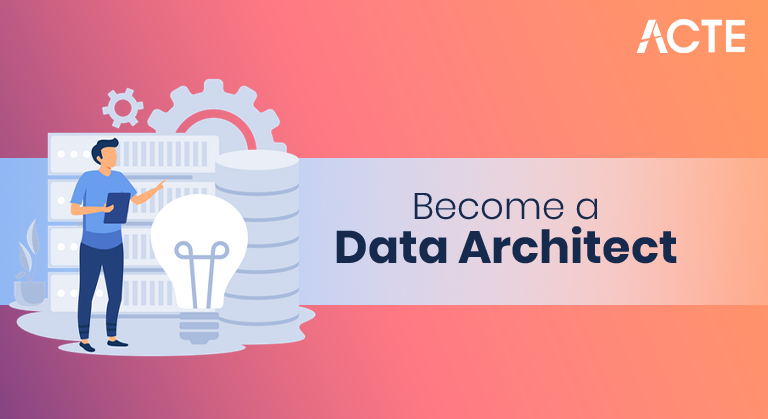
- Introduction to the Role
- Essential Technical Skills
- Required Educational Background
- Certifications and Courses
- Data Modeling Knowledge
- Tools and Technologies to Learn
- Gaining Relevant Experience
- Soft Skills Needed
- Building a Portfolio
- Job Search Strategy
- Career Progression
- Summary
Introduction to the Role
A Data Architect is a specialized IT professional responsible for designing, creating, deploying, and managing an organization’s data architecture.Their role ensures that data is well-structured, secure, and efficiently accessible to meet the needs of data scientists, analysts, and decision-makers, especially in the context of Data Science Training. eir role ensures that data is well-structured, secure, and efficiently accessible to meet the needs of data scientists, analysts, and decision-makers. With businesses relying more on data to drive strategic initiatives, the role of a Data Architect has become central to data-driven enterprises. Data Architects bridge the gap between business needs and technical implementation, making them essential for modern digital infrastructure.
Do You Want to Learn More About Data Scientists? Get Info From Our Data Science Course Training Today!
Essential Technical Skills
Becoming a proficient Data Architect requires mastery of several technical domains:
- Database Technologies : Proficiency in SQL and NoSQL databases such as MySQL, PostgreSQL, MongoDB, and Cassandra.
- Data Warehousing : Understanding OLAP systems and Hadoop Developer Roles tools like Amazon Redshift, Google BigQuery, or Snowflake.
- ETL Tools : Familiarity with data extraction, transformation, and loading using tools like Talend, Informatica, or Apache NiFi.
- Big Data Platforms : Knowledge of Hadoop, Apache Spark, and data lakes.
- Cloud Platforms : Competence in AWS, Microsoft Azure, and Google Cloud Platform.
- Programming Languages : Python, Java, Scala, and Shell scripting for data manipulation and automation.
- Security Practices : Knowledge of encryption, data masking, and access controls for protecting sensitive data.
Developing a strong foundation in Essential Technical Skills is key to thriving in the modern tech industry. These Essential Technical Skills such as programming, cloud computing, and database management enable professionals to solve complex problems, build efficient systems, and stay competitive in a rapidly evolving digital landscape.Having essential technical skills, including knowledge of JBPM Basics, is essential for professional advancement and workplace effectiveness in today’s competitive employment environment. To address issues, adjust to new technologies, and spur creativity, workers in any field whether IT, engineering, or another rely on essential technical skills.
Required Educational Background
To pursue a career as a Data Architect, the foundational step is acquiring a relevant educational qualification. A bachelor’s degree in computer science, information technology, or a related discipline is typically required. Many Data Architects further pursue a master’s degree in data science, information systems, or business analytics to harness the Power of Programmers.

- A key step in creating efficient databases and arranging data for best usage is data modeling. Organizations may guarantee data consistency, enhance performance, and facilitate improved decision-making by employing data modeling.
- For positions involving sophisticated data systems, such as data architects, analysts, and engineers, mastering data modeling is crucial.
Academic training should emphasize mathematics, programming, database systems, data structures, and algorithms. One’s knowledge, abilities, and professional prospects are significantly shaped by their educational background. When determining whether a candidate is qualified for a particular function and has the potential to advance within a company, Employers frequently take into account their educational background, especially if it includes resources like the Comprehensive Drools Guide. Advanced coursework or research projects related to data modeling, distributed systems, or cloud computing is also beneficial. The basis for a prosperous career in any professional field is a solid educational background. When evaluating a candidate’s expertise, skills, and preparedness for a position, employers frequently take into account their educational background. Gaining certificates or higher degrees on a regular basis might increase your credibility and lead to new job prospects.
Certifications and Courses
Earning certifications enhances credibility and showcases specialized expertise. Recommended certifications include:
- AWS Certified Data Analytics – Specialty
- Google Professional Data Engineer
- Microsoft Azure Data Engineer Associate
- IBM Certified Data Architect – Big Data
- DAMA Certified Data Management Professional (CDMP)
- When preparing for the Cloudera Certified Professional (CCP) Data Engineer exam, one critical decision for candidates is choosing the right programming language for implementing data pipelines and processing tasks. Python vs C++: Key Differences Explained. Explained becomes a relevant discussion in this context, as both languages offer unique advantages in data engineering environments..Online platforms such as Coursera, edX, and Udemy also offer professional courses tailored to data architecture concepts and tools.
- Conceptual Modeling : High-level representation of organizational data.
- Logical Modeling : Structuring data without considering the physical aspects
- Physical Modeling : Implementing databases with performance optimization.
- Data Analyst or Database Developer
- ETL Developer
- Business Intelligence Analyst
- Data Engineer
- Communication : Explain complex architectures to non-technical stakeholders.
- Problem-solving : Identify bottlenecks and design efficient solutions.
- Collaboration : Work across departments to align data strategy with business goals.
- Leadership : Guide data teams and enforce data governance practices.
- Attention to Detail : Ensure data consistency, accuracy, and compliance.
- Case Studies : Projects that demonstrate design and implementation of data systems.
- Sample Models : ER diagrams, data warehouse schemas.
- Technical Documentation : Explaining processes, decisions, and tools used.
- GitHub Repositories : Containing scripts, templates, or architecture blueprints.
- Certifications & Courses : Add completed certifications with project work. Publishing blog posts such as on topics like Differences Between C++ and Java or speaking at data meetups can also strengthen personal branding.
- Senior Data Architect: Leads larger projects and teams.
- Enterprise Architect: Aligns data strategy with overall IT and business architecture.
- Chief Data Officer (CDO): Oversees data governance, analytics, business intelligence, and the implementation of tools like Tableau Desktop for data visualization and reporting.
- Consultant/Trainer: Offers expertise to multiple clients or trains aspiring professionals.With each progression, responsibilities grow from technical implementation to strategic decision-making.
Would You Like to Know More About Data Science? Sign Up For Our Data Science Course Training Now!
Data Modeling Knowledge
One of the core responsibilities of a Data Architect is designing efficient and scalable data models. This includes:
Familiarity with normalization, star and snowflake schemas, and ER diagrams is critical.Data Architects must ensure data integrity, avoid redundancy, and optimize storage, as well as understand concepts from resources like A Guide to Building a Career as a Python Developer.
Tools and Technologies to Learn
A modern Data Architect must be well-versed in a variety of essential tools. For modeling, tools like ER/Studio, Lucidchart, DBDesigner, and Oracle SQL Developer Data Modeler are vital. When it comes to visualization, software such as Tableau and Power BI helps convey architectural frameworks effectively. Collaboration and source control rely on version control systems like Git and GitHub. To streamline automated deployments, familiarity with CI/CD tools like Jenkins and Azure DevOps is crucial.For deploying scalable data solutions, harnessing containerization technologies such as Docker and Kubernetes is key, alongside understanding critical decisions like Choosing Between Python and Java Finally, monitoring tools like Prometheus, Grafana, or Datadog are indispensable for tracking performance metrics.

Keeping up with the newest tools and technologies is crucial for job advancement in the rapidly changing tech sector. To stay productive and competitive in their jobs, professionals need to constantly learn new skills and adjust to new tools and technologies. Learning the proper tools and technologies, such as cloud platforms and development frameworks, may greatly increase output and creativity.
Gaining Relevant Experience
Building a successful career in any technical subject requires gaining relevant experience. Candidates that exhibit Relevant Experience through practical projects, internships, or former positions, along with Data Science Training are frequently given preference by employers. You may improve your chances of being noticed in a crowded job market by consistently looking for ways to broaden your Relevant Experience. Practical experience is vital. Start with roles such as:
In these roles, professionals get exposure to data pipelines, storage solutions, and reporting requirements. Gradually, with expertise in large-scale data design and cross-functional team collaboration, they can transition into Data Architect roles. Internships, freelance projects, and open-source contributions can also be stepping stones.
Soft Skills Needed
Soft skills are equally as vital as technical expertise in today’s business. Effective collaboration and confident leadership are made possible by professionals possessing strong soft skills including communication, teamwork, and flexibility. You can gain leadership possibilities and greatly accelerate your career progress by honing your soft skills.In addition to technical acumen, Data Architects need strong soft skills; pursuing a Java Certifications can also enhance their credibility and communication when collaborating with development teams.
Preparing for Data Science Job? Have a Look at Our Blog on Data Science Interview Questions & Answer To Ace Your Interview!
Building a Portfolio
Showcasing work through a professional portfolio helps demonstrate capabilities. Include
Job Search Strategy
To secure a Data Architect role, focus on a few key strategies. First, network by attending data conferences, joining LinkedIn groups, and connecting with industry professionals. This will help you build valuable relationships. Gaining hands-on experience even by starting with something as simple as a Java BASIC Programs can be a foundational step toward building the technical skills required for this role. Use job portals like LinkedIn, Naukri, Indeed, and Glassdoor to find openings that suit your skills. Referrals can also be very helpful; reach out to your network for assistance in getting noticed by your target organizations. Finally, prepare for interviews by reviewing system design, SQL, cloud services, and case-based questions. Consider taking contract or consulting roles to gain experience and open doors in the field.
Career Progression
Data Architects have clear growth paths:
Summary
Becoming a Data Architect is a rewarding career path for professionals passionate about designing scalable, secure, and robust data systems. It requires a strong educational foundation, hands-on experience, knowledge of cutting-edge tools, and the ability to bridge the gap between data and business strategy. By continually upgrading skills, earning certifications, and gaining practical experience, professionals can carve out a successful career in this high-demand role. As data continues to fuel innovation and decision-making across industries, the need for skilled Data Architects will only continue to grow. Next, improve your resume. Highlight your projects, the tools you’ve used, and the impact of your work, especially those related to Data Science Training , to attract attention.


